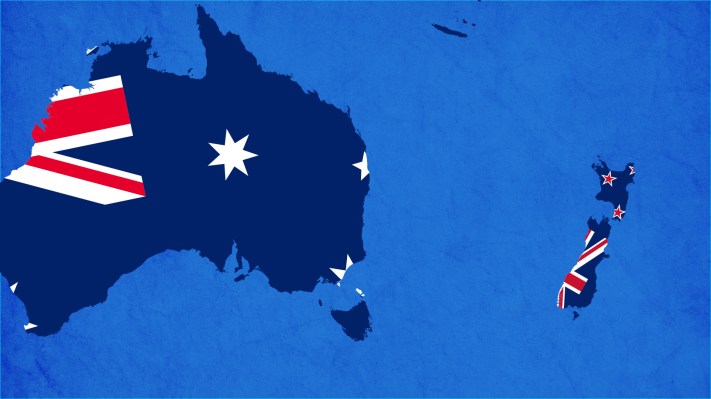Australia and New Zealand are a far cry from Silicon Valley, yet the problems and circumstances of their venture environments tend to be similar in nature.
Megadeals are rarer today, early-stage funding is up, valuations have come back to earth, and investors are encouraging their portfolio companies to demonstrate a sustainable business with a clear path to revenue. The difference is that the geographic isolation of Australia and New Zealand creates a sense of hustle, if not urgency, around raising funds and building a global product.
The Aussie and Kiwi startup ecosystems are newer and less robust, and their markets are generally smaller than their U.S., Asian and European counterparts. As such, startups here have a greater need to access not only international markets, but also foreign funds, particularly if they’re operating in capital-intensive industries like deep tech, and for later-stage rounds.
“For the large majority of Aussie and Kiwi businesses, their main markets are typically offshore,” Dan Krasnostein, partner at Square Peg Capital, told TechCrunch+. “Having investors on the cap table from these markets can be helpful for growing and building local teams in those markets, or for finding customers.”
Rather than a weakness, startups from these countries have turned this set of circumstances into a strength. They know how to punch above their weight, and they know that they have to build a global product from Day 1.
Similarly, the recent slowing of funding in 2022 and 2023 could work to the Aussie and Kiwi advantage. After all, this is a population that had its mettle tested in the middle of the Pacific Ocean. Doing more with less isn’t a challenge — it’s the norm.
Craig Blair, co-founder and partner at AirTree Ventures, says the flow of capital into later-stage companies has changed, but that’s been to his portco’s benefit.
“Capital efficiency is being rewarded now versus growth at all costs in the bull market,” said Blair. “The bright spot is that Aussie and Kiwi entrepreneurs are among the most capital-efficient producers of unicorns in the world, and there’s plenty of evidence to show them bucking the growth-stage pullback trend.”
Just look at the companies that survived and thrived after the Great Financial Crisis of 2008, like Australia’s Atlassian and Canva, and New Zealand’s Xero and Rocket Lab. Industry players believe a new batch of startups today will rise from this somewhat-depleted funding environment to become the next round of unicorns.
Investors predict today’s capital environment and more sober valuations will lead to an increase in mature startup acquisitions, strategic mergers, and joint ventures across the region. They expect to see more companies fail, which will raze the playing field and lead to more consolidation and reallocation of capital, with talent focused on the most disruptive companies that continue to thrive.
Read on to learn more about what Australian and New Zealand investors think about venture capital in the region today, including the challenge of competing with U.S. salaries for top talent, the promise of climate tech and more.
